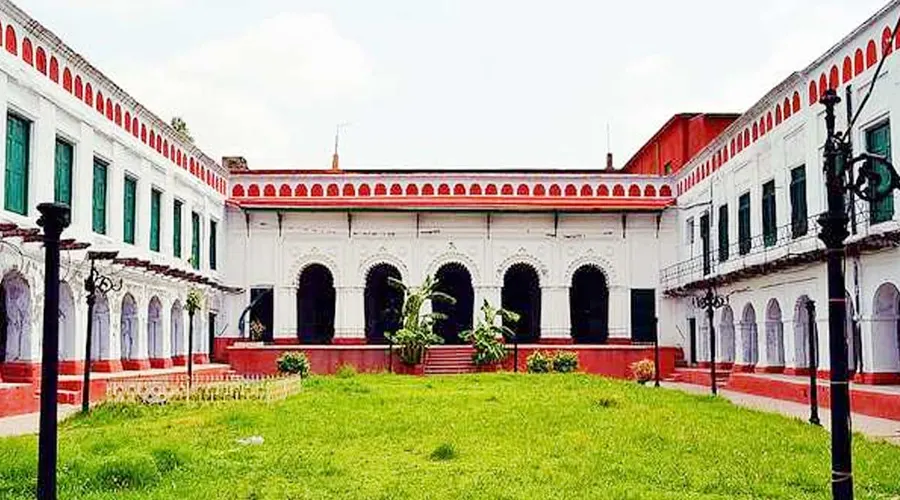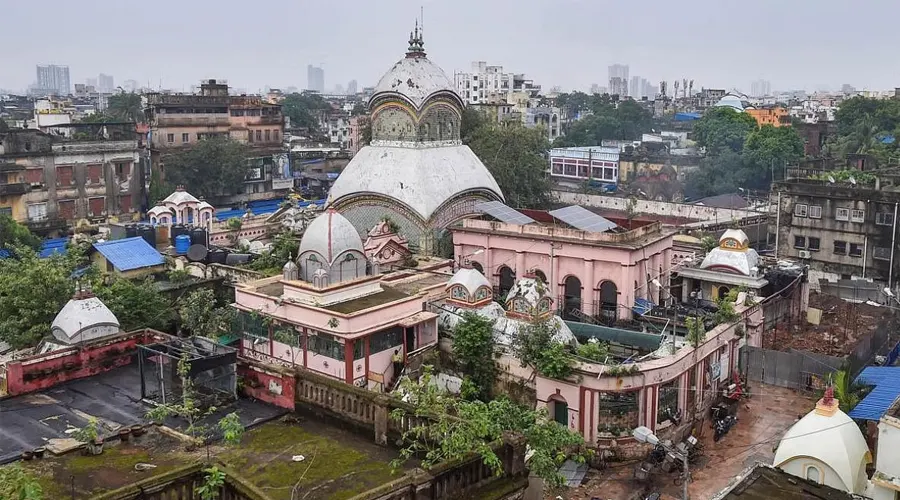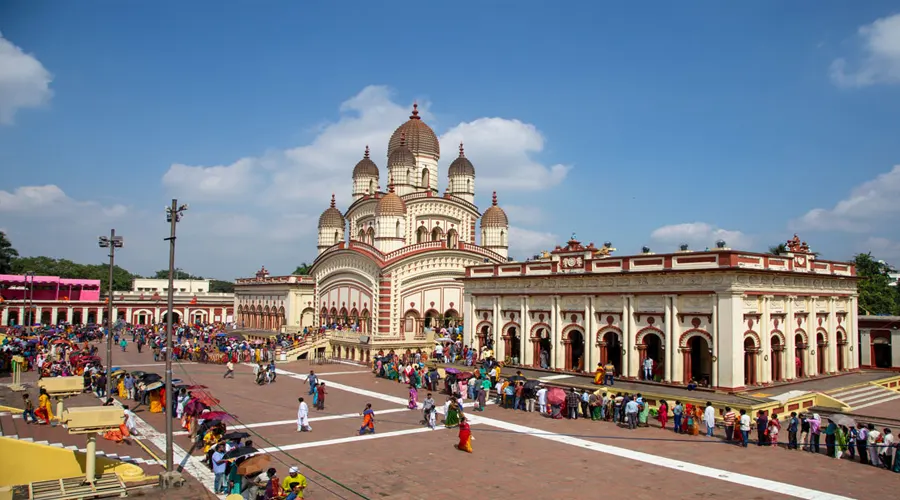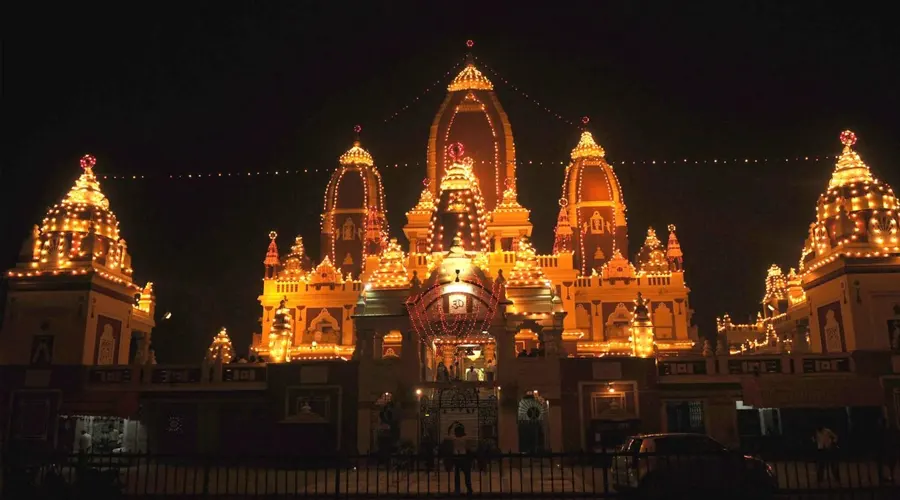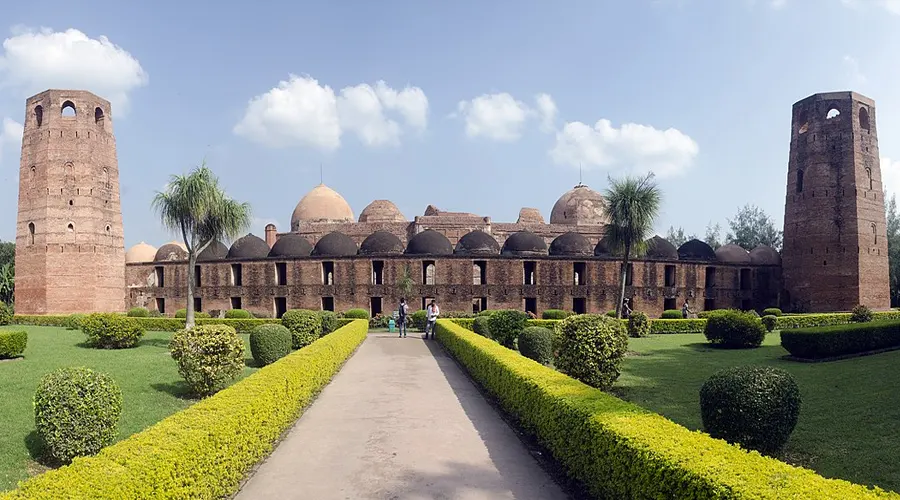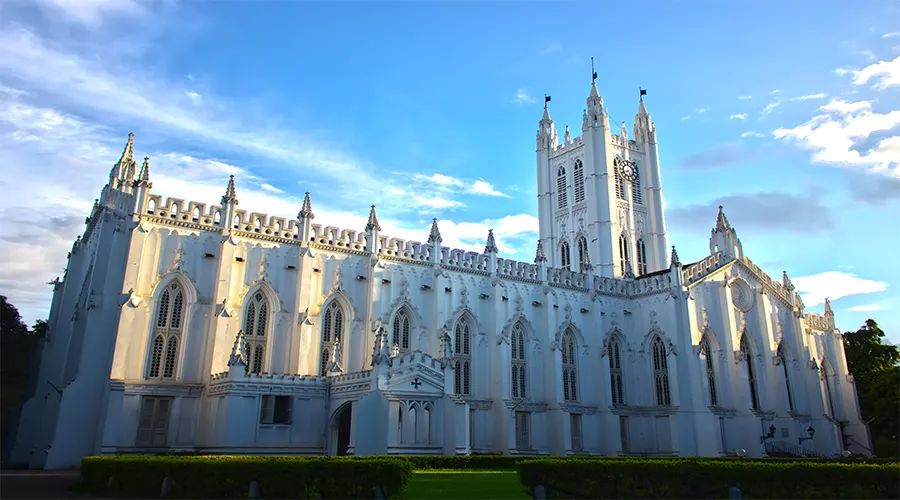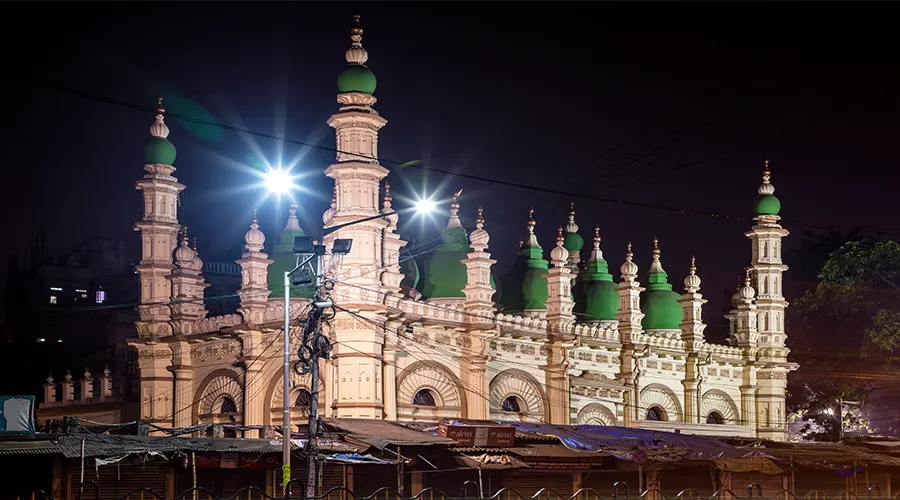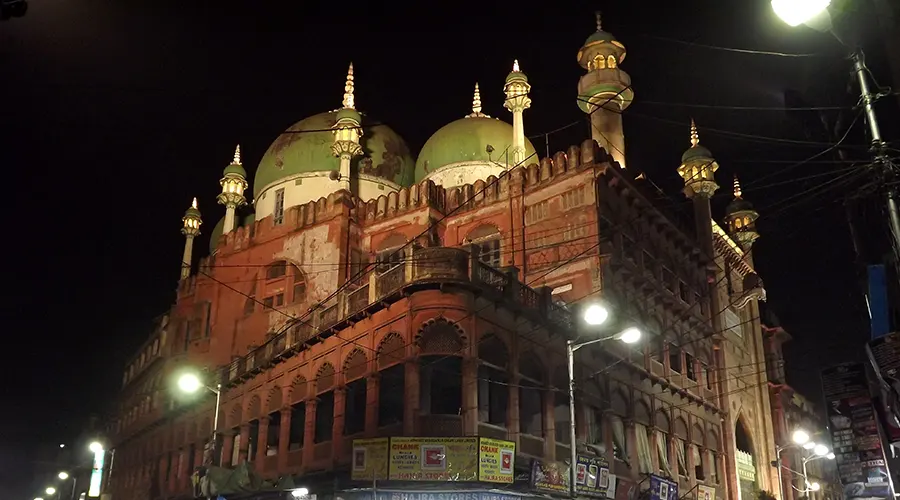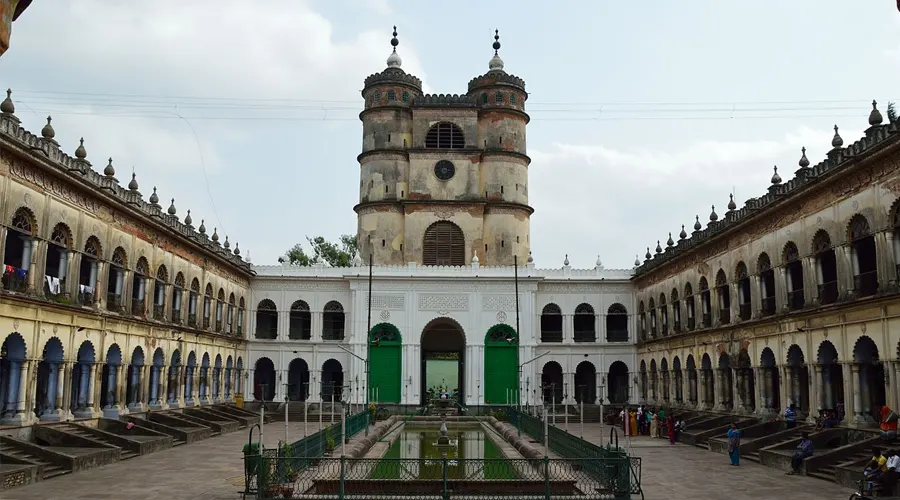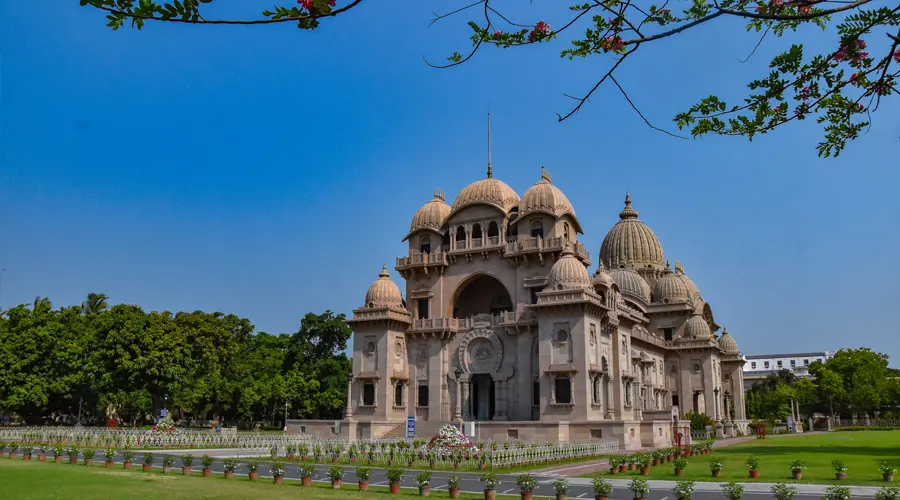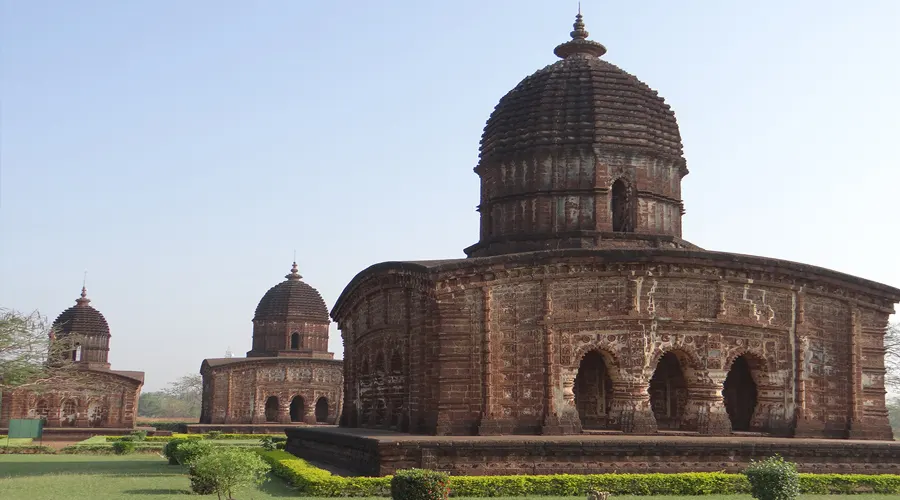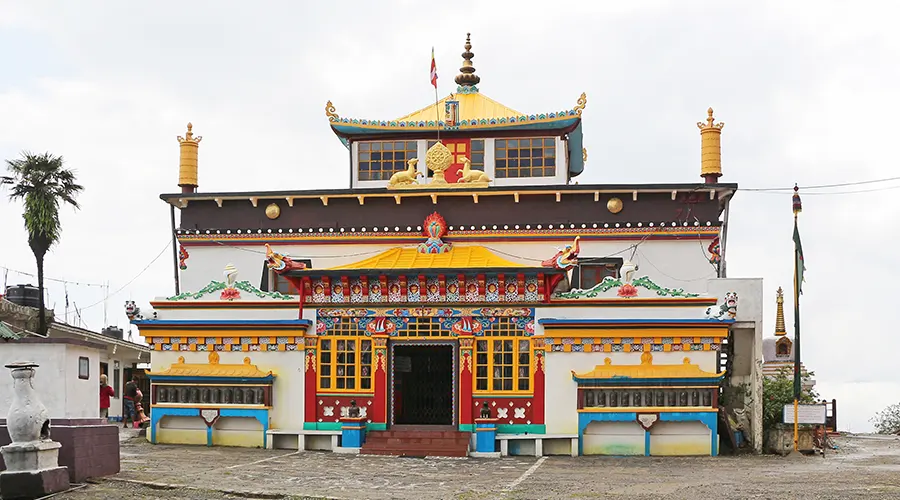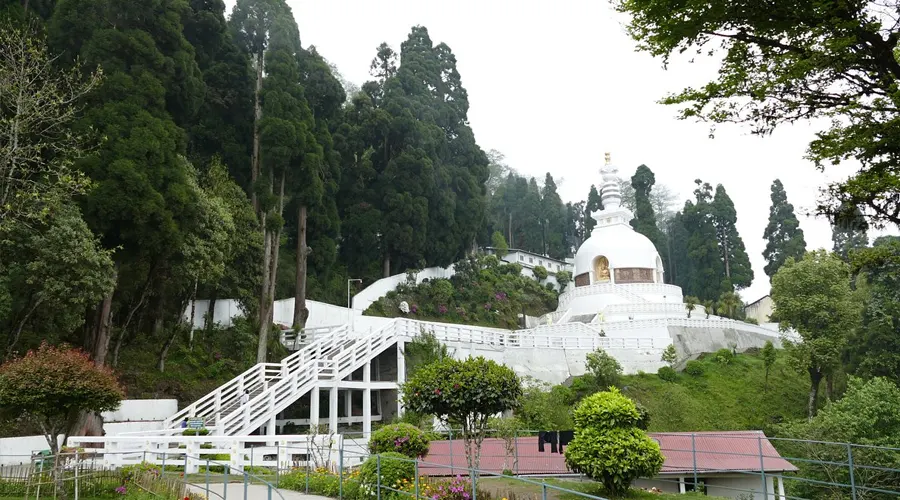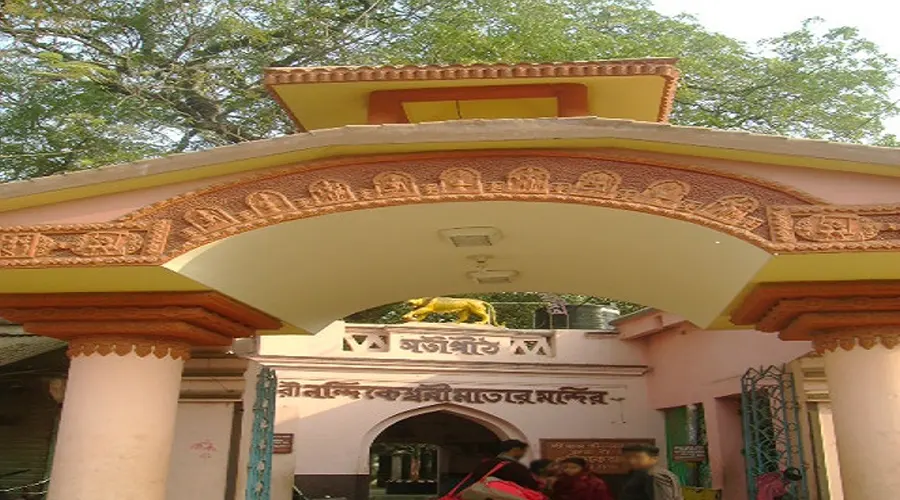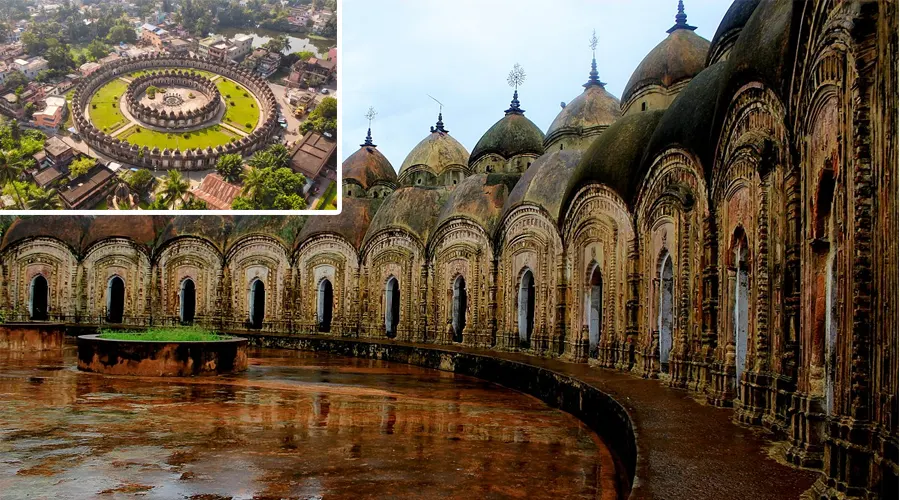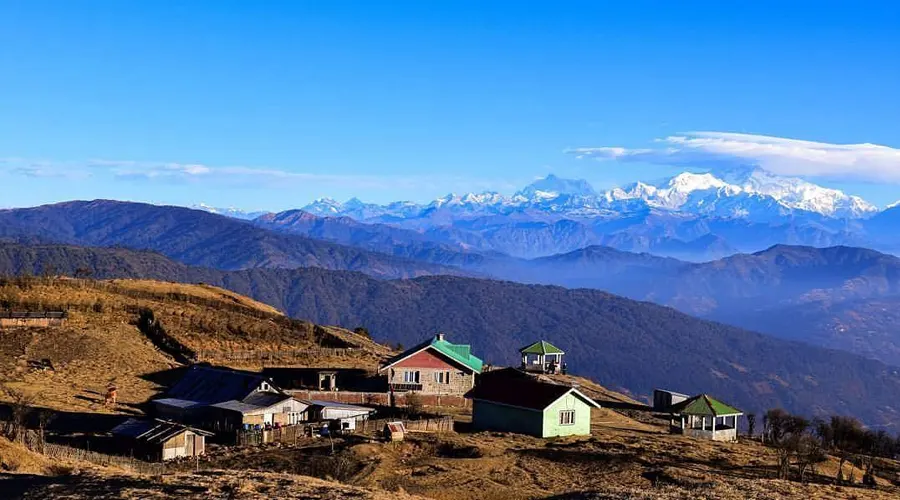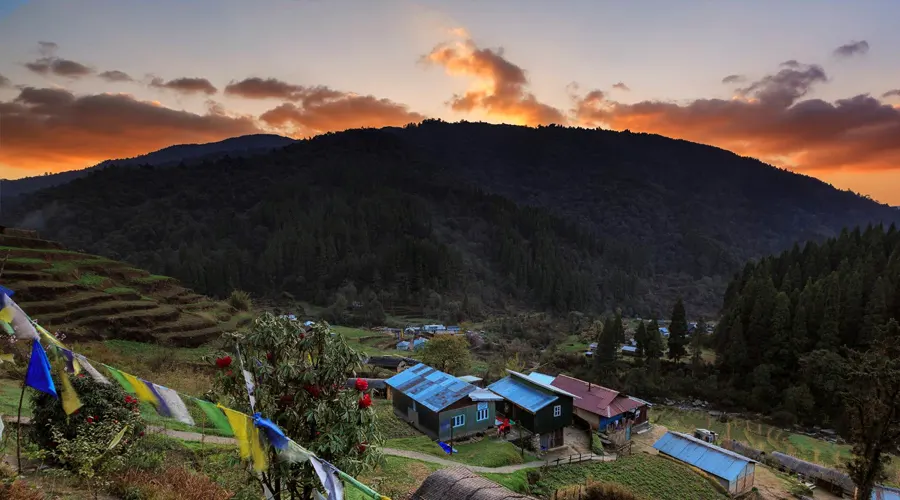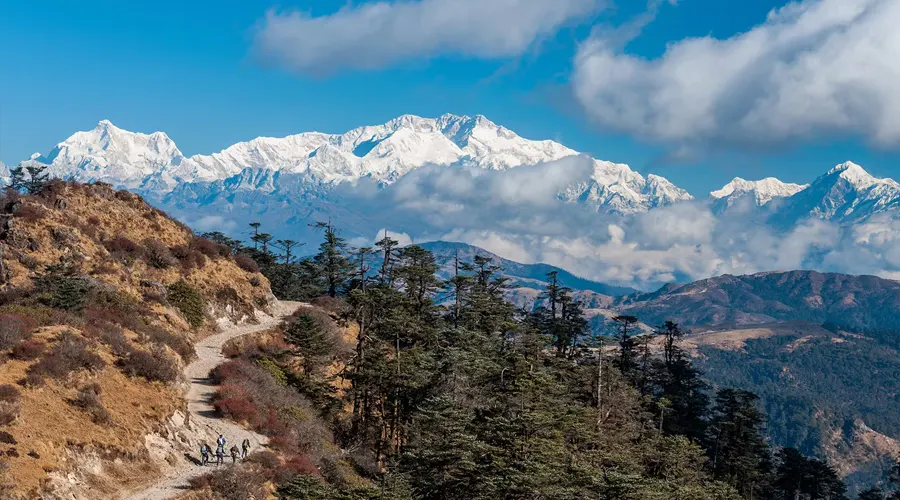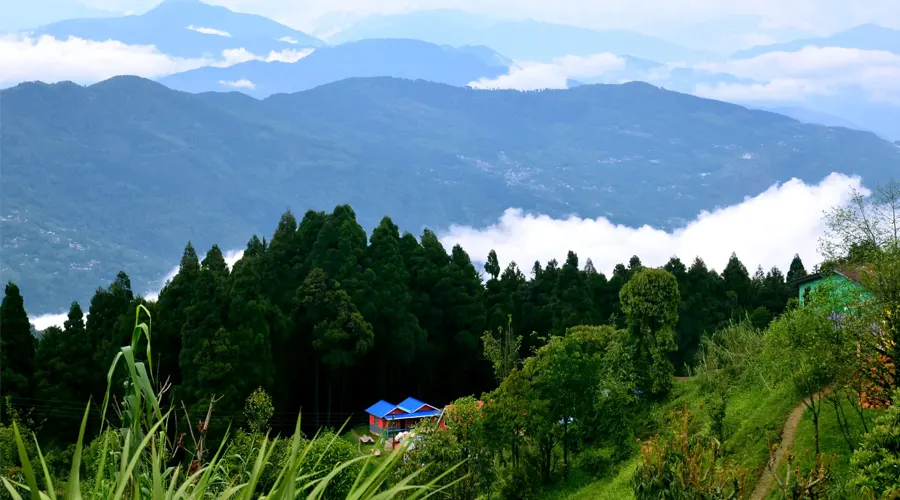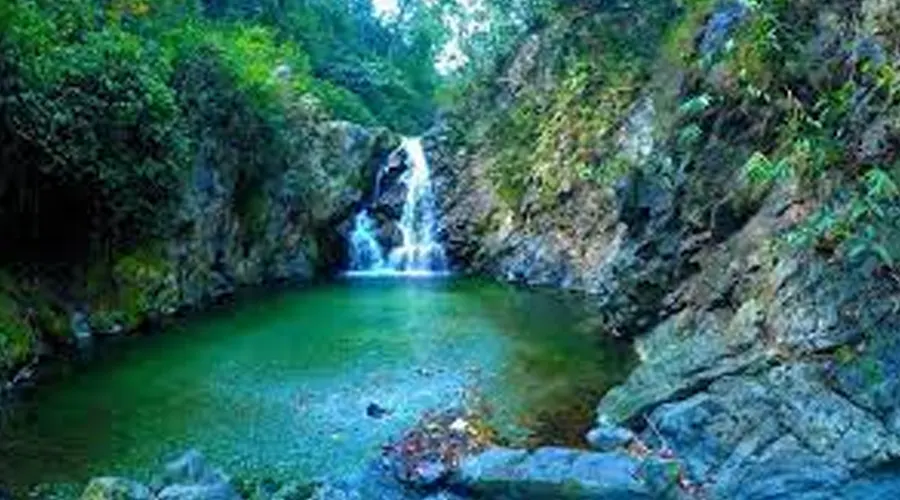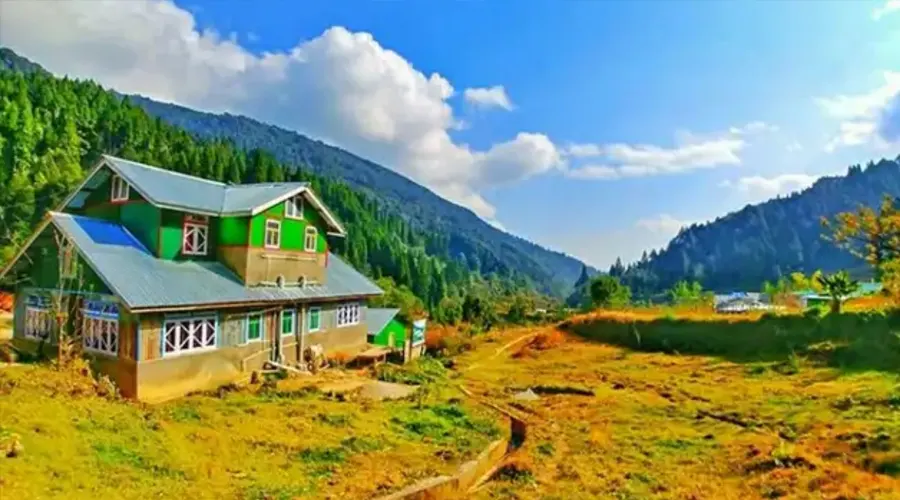Shobhabajar Rajbari
One of the oldest royal houses in the city, Sovabazar (Shobhabazar) Rajbari, was constructed by Raja Nabakrishna Deb, a prominent aristocrat of the city. This palatial structure is best known today for the iconic Durga Puja celebrations that take place in October-November. One of the notable features of this monument is the Nat Mandap, which is a centrally located open courtyard. Supported by columns that are adorned with arches and have a square base, the courtyard was once a venue for special functions and celebrations.
There are double-storey wings on either side of the courtyard that connects the mandap with Naach Ghar, which is now in ruins. Sovabazar Rajbari was built in 1700 and is a mix of Moorish, Hindu, and colonial styles of architecture.
Being a close confidante of Lord Clive, Raja Naba Krishna Deb wielded a lot of authority during his time. He was the first to celebrate Durga Puja on a lavish scale in 1757 after the British defeated Siraj-ud-Daulah at the Battle of Plassey. Top British officials including Sir Warren Hastings and Lord Clive were invited to this celebration. When Swami Vivekananda returned from the Chicago Parliament of Religions in 1897, this was where his first civic reception was organized by Raja Binoy Krishna Deb Bahadur.
History of Shobhabajar Rajbari
The palace was built in the 17th century by Raja Nabakrishna Deb who was an aristocrat and ardent supporter of the Brahmo Samaj Movement. He is also known for his contribution to the Bengal Renaissance. The iconic Durga Puja held every year at Shobhabazar is a practice that was initiated by him in 1757, right after the Battle of Plassey.
Rajbari became the hub of Bengali culture and traditions, with several eminent personalities like Lord Clive, Warren Hastings, Sister Nivedita, Raja Ram Mohan Roy, Rabindranath Tagore, and Debendranath Tagore attending the events organized here. After Swami Vivekananda returned from the Chicago Parliament of Religions, a civic reception was organized for him at this palace by Raja Binoy Deb Bahadur.
Architecture of Shobhabajar Rajbari
The palatial structure has retained its magnificence to date and looks very impressive. The open courtyard in the center of the building is known as Nat Mandap. There are several columns with a square base and arches around this courtyard which was used earlier for hosting functions and festivals.
There are double-story wings on either side of this courtyard which leads to the naach Ghar in the south of the building. Naach Ghar of Shobhabazar Rajbari Kolkata has held dance performances by several eminent artists like Miss Rangham, Malkajaan, Noor Baksh, Gohor Jaan, etc.
The roof of the naach Ghar had caved in and now what remains is only a small part of the original structure. Its courtyard, however, is still intact and in good condition.
The palace also has a temple called the Nabaratna Temple which is the sanctum sanctorum of the family deity Radha Gobinda, also referred to as Gopinath Jiu (Krishna) by the family. The Zamindar family has been worshipping this idol for more than 250 years now. This deity is in the new Rajbari which is adjacent to the old one and was built by the descendants of Raja Nabakrishna Deb.
History of Durga Puja at Shobhabazar Rajbari Kolkata
The idol of Durga in the Shobhabazar Rajbari Durga Puja used to be covered with golden color in the beginning but for almost a century in between, it had been changed to silver for financial reasons. In 2017 the golden color of the idol was brought back which has made this place even more popular now.
Another interesting aspect of Shobhabazar Rajbari Durga Puja is the Shehnai music played by artists from Varanasi, which adds to the splendor of the celebrations.
Right opposite Shobhabazar Rajbari is Chota Rajbari which was also built by Raja Nabakrishna a few years later. This palace also hosts a Durga Puja every year which is organized by the descendants of the Zamindar family.

